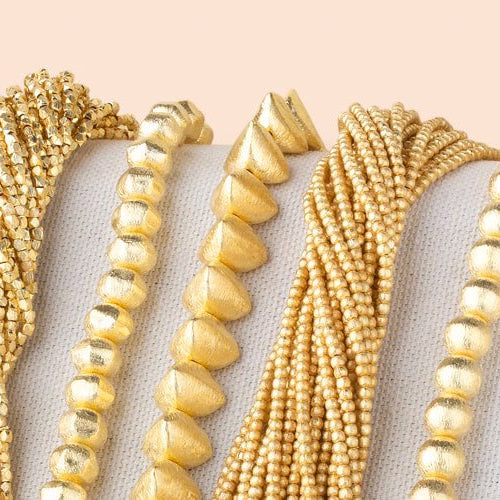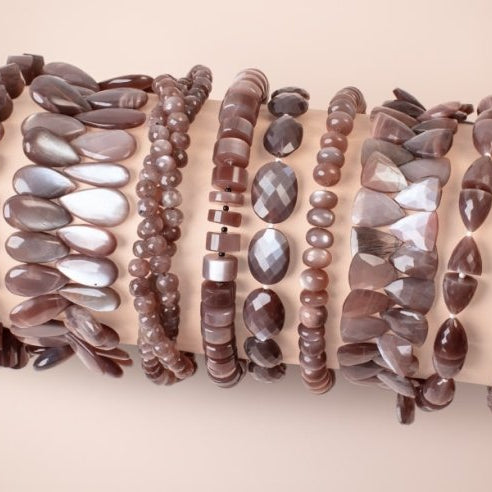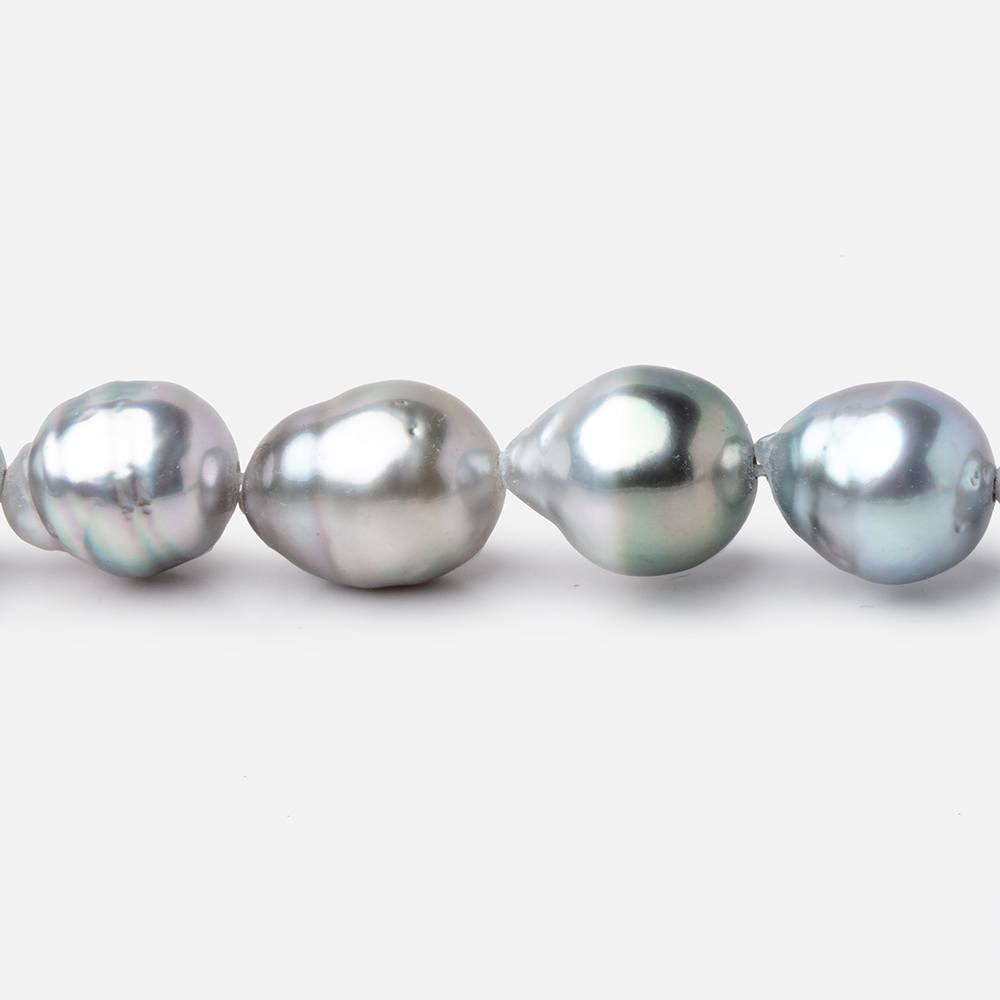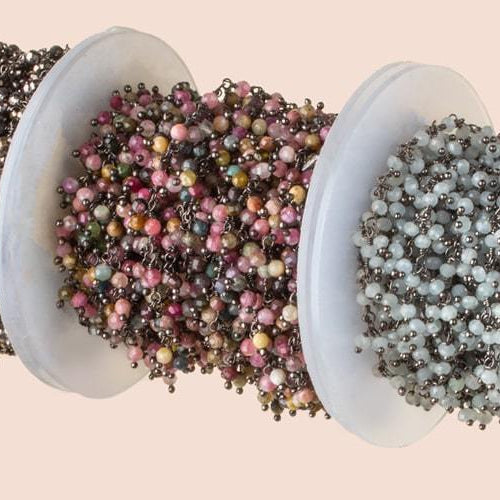When you make the decision to create your own bead jewelry, choosing which beads to use is the fun part, but there’s more to creating that perfect necklace than just selecting some gorgeous beads. You still have to decide what material to use as the stringer on which you’ll string these fantastic bead finds.
Selecting the right type of material for stringing your jewelry projects is the most important decision you’ll make when creating your own pieces. You’ll need to take into consideration the type of jewelry you’ll be making: necklace? bracelet? earrings? You’ll want to consider the overall look and style you plan to create with your design. Finally, you have to be certain your choice for stringing material is a good fit for the type and size of beads you’ll be using.
To help you with this most important decision, we’ve put together a list of some of the most popular stringing materials.
Beading Wire
The most popular stringing material is bead stringing wire. This wire is made up of tiny stainless steel cables twisted together and covered with a nylon coating. The nylon cover prevents the cables from tarnishing.
Beading wire is sized according to the number of strands it has. The higher the number, the more flexible the wire will be. You’ll need to consider the diameter of the holes in your beads as well. Beading wire varies by diameter, with the smaller wire used for lightweight beads like small pearls or seed beads. You’ll need a larger diameter wire for bigger beads.
Beading wire can tend to kink, and, once there is a kink in place, it is almost impossible to straighten out completely.
Monofilament Cord
Monofilament cord is often known as illusion cord. It’s a clear bead stringing cord. If you’re a fisherman, you’ll notice the similarity to fishing pole string. The name comes from the effect that it gives to the jewelry piece. The beads seem to “float” with no visible string between the beads.
Monofilament is not as strong and durable as beading wire, but it doesn’t kink like wire will do.
Elastic Cord
This is a flexible, stretchable cord that doesn’t require any findings to finish off a jewelry piece made with it. Elastic cord can be knotted or fused together with heat at the ends. Elastic cord is popular with informal types of jewelry and is especially useful when designing children’s jewelry.
Silk Thread
If you’re going for an authentic, traditional look, then silk thread is what you’ll need. Silk thread is great for stringing pearls, for example, if you need to knot between the pearls. Silk thread is softer and easier to tie into knots than any other type of thread.
Silk has its drawbacks, however. Silk will tend to fray, and can stretch over time, usually between three to five years. Because of this feature of the silk, it is usually better not to use silk with the heavier beads. You’ll need to be prepared to restring your jewelry after a few years.
Nylon Thread
Nylon beading thread is the modern substitute for silk thread. In fact, nylon is more popular as the beading string of choice than silk. Nylon alleviates the risk of fraying, and it doesn’t stretch as much as natural silk. You can get nylon bead threads in a variety of colors, sizes, and spool lengths.
Leather Cords
If you’re going for a rustic look with your jewelry design, you may want to look at simulated suede and leather cords as your stringing material. Leather cording is used mostly for stringing the larger, bulkier beads and pendants because of its strength and durability.
Suede doesn’t require any findings to close the necklace. It can be tied with a knot and worn as a pendant. If you prefer findings to close off the end of your necklace, you can use coil or leather crimps. Simulated suede is generally more popular than leather because it is softer, and it can be obtained in a variety of dyed colors.
Memory Wire
Memory wire is a coil of tempered stainless steel wire. It is very strong and holds its circular shape when stretched. It can stay on your wrist or neck without a clasp. To close off memory wire, all you have to do is make a loop at the end of the wire or add a capping bead at the end.
When cutting memory wire, you’ll need hardware store wire cutters, not side cutters. Remember to wear your eye protection when cutting memory wire.











